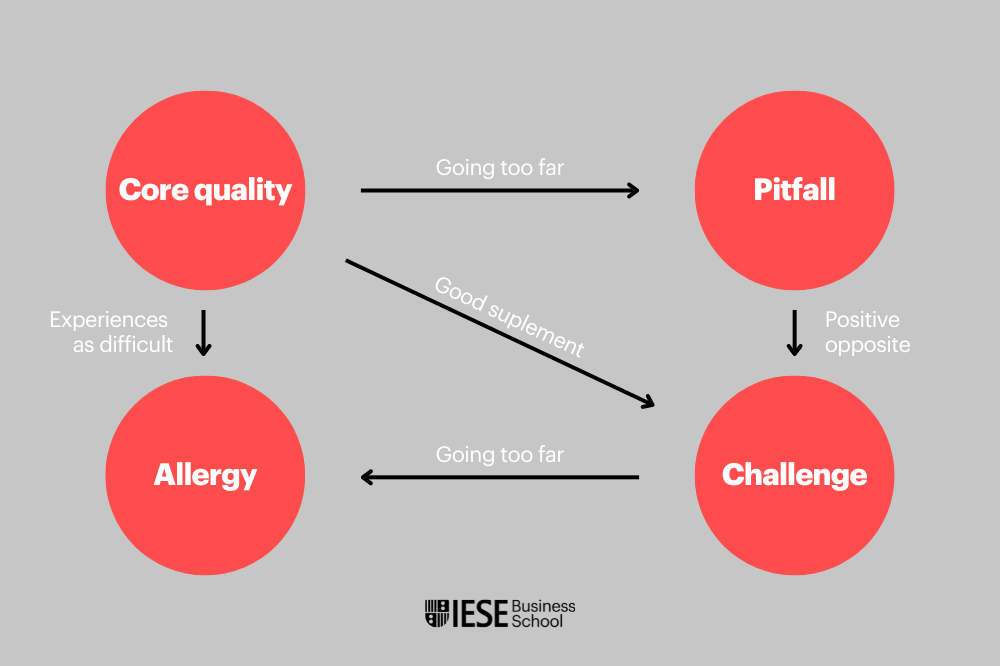If you could design the team of your dreams, perhaps your first thought would be to have one that operated like clockwork, didn’t give you any problems, and had the same opinions as you. But if you have ever led a team, you know that nothing could be further from the truth. Furthermore, nothing could be more harmful to a company than uniformity, an absence of conflict, or obedience at all costs.
Not just because diversity of character, or of opinion, is an unavoidable part of life, but also because debates generated by diversity are essential if a group is to cooperate, get the best out of each group member, and carry out projects reliably. If this explanation isn’t clear, consider how many of the successful ideas you have seen in your company only went through one person.
However, it is true that most executives have wished, at one time or another, that their team would work more harmoniously together, or cause fewer headaches. They may even have resorted to authoritarian or toxic management styles, which often do more harm than good in the medium to long term.
A more real leadership style may be the starting point for breaking this cycle. Because, even though there is no magic recipe for all working groups, a series of very useful tools and, above all, a change in mentality can be very helpful in this process. Spoiler alert: although it may not seem very intuitive, in this case, it actually is advisable to put the cart before the horse.
Good team management starts with senior management
According to the research of IESE Professor Anneloes Raes, if the foundations of teamwork are well-established within the company’s leadership, it is easier for these positive dynamics to permeate through all the layers of the organization. But, how will people know about what is going on in the boardroom?
Employees talk. In the corridors, in the elevator, at the coffee machine. And, according to Professor Raes, employees know whether the relationships within senior management are good or bad, and they see the example that is being set. “The senior management team’s behavior permeates throughout the organization, and it can shape the behavior of employees, for good or ill. Workers interpret the dynamics of the leaders as a signal that indicates what is expected of them, and what they consider to be acceptable or not”, confirms Raes.
This influence is clearly demonstrated when two departments are required to collaborate on a particular project, but their respective leaders do not have a good personal relationship. When the relationship between leaders is lacking, it often has a negative impact on the way their subordinates cooperate with each other.
How to promote diversity and collaboration in management teams
As a result, in order to work in a successful team, more than anything, leading by example is the responsibility of any executive. But we also know that management teams are not immune from friction and intense debates. Therefore, the first step in ensuring that a diverse senior management group operates efficiently is to recognize those difficulties, and not hide them under abuses of authority or simply be resigned to them remaining unresolved.
For Raes, the main obstacles that affect management teams are based on 4 beliefs:
- Putting too much faith in the figure of the strong captain and visionary, who gives the crew confidence that he or she will steer the ship safely.
- Assuming that it is impossible to become a real team without increased conflicts between members.
- Anticipating that team negotiations will be infinite debates which will be paralyzing in the face of competition.
- Confusing making decisions as a team with group think: a toxic dynamic that leads to harmful consensuses.
All of these positions are entirely understandable. However, according to Raes, the important thing is not to obsess about these challenges, but rather to create processes that mitigate them. A diverse, well-integrated management team will debate issues and make better decisions, and they will set an example of respect and personal connection which will spread to the rest of the organization.
On the other hand, Raes highlights that, although there are different levels of intensity (teamness) in teamwork, there are 4 elements that all groups should have in common:
- A clear mindset that is entirely team-focused.
- Common goals that encourage coordinated action.
- A shared purpose that justifies the need for a team.
- An attitude that is focused on tactful negotiation, but that is not afraid to tackle uncomfortable issues.
Learn to create environments in which each team member can find their purpose and place
Whether the team is a management team or a team made up of employees, one of the keys to creating harmony between the members is to do everything you can to ensure no-one is left behind. This means building foundations and creating environments which allow each person to be themselves and feel like they fit in, and are participating and progressing with other people, although everyone will do this in their own way.
Accommodating different styles and personalities can help improve relationships within any team and, as we have seen, this can have a great influence on the rest of the organization. Ryan Vogel, a visiting professor at IESE for the 22-23 academic year, shares 5 recommendations for creating workplaces where it is easier for people to adapt:
- Use ethical conflicts to unite, rather than divide. It is possible for a team to debate moral issues and still emerge stronger. With education and respect, these discussions can help us discover central values that we all share.
- Encourage your team to design their own workstation. Giving people a voice and a say in creating an environment they want to be part of promotes inclusion.
- Promote relationships outside of the office. Leisure activities help bring people together, and they enable those who are least satisfied to associate work with something stimulating.
- Help anyone who needs to regain confidence in themselves, and in others. Sometimes, professionals have emotional issues that need to be dealt with in order for them to integrate well with the group.
- Relax dress codes wherever possible. The clothes we wear tell others who we are, but they also have a profound effect on what we think of ourselves: the aesthetics, consistency and uniqueness of our clothing has a positive influence on our self-esteem.

Keys to working in a team: empathy, values, norms and shared realities
In addition to promoting inclusion, there are some other strategies that can help us successfully lead diverse teams, even when we are working in virtual or hybrid environments.
Professor Anneloes Raes champions empathy as an essential skill in any business situation: “Putting yourself in someone else’s shoes helps strengthen connections between employees, which ends up generating innovation. In addition, empathetic leaders are able to create an atmosphere within which all team members can safely present their ideas,” she states.
Likewise, IESE Professor Maya Rossignac-Milon highlights the need to promote “shared realities” in order to improve harmony within teams. This refers to the experience of having the same thoughts and feelings as another person about a specific reality, such as a project. Professionals who share realities often feel more committed, and are more productive. In order to strengthen this type of thinking, the professor suggests creating different types of rituals within the workplace.
Finally, IESE Professor Isabel Villamor suggests that, in order to ensure that relationships between team members function smoothly, it is essential for them to share “some central values, from which clear operational norms can be derived”. A group works better when it can adhere to some basic rules which define its goals and its behavior. These systems are particularly valuable for virtual and hybrid teams, as they avoid misunderstandings, and provide certainty and a sense of belonging within an environment that lacks spontaneous personal interactions.
An exercise for improving the environment within your team: try the Core Quality Quadrant
We have all been irritated by the behavior of another person at some point. And when this happens, we tend to think that it is the other person, not us, who should change their attitude and adjust to our needs. But, is this point of view fair, or objective? Probably not.
According to the Core Quality Quadrant model, each of us are annoyed by certain specific behaviors and not by others, depending on what our core qualities are. Core qualities are understood to be the main natural strengths of our personality. The differences between these qualities can lead to major friction, as one person’s quality can lead to an attitude that is intolerable for another person.
Let’s look at an example, and present the case of a very organized person:
- Their core quality is order.
- If this attitude goes too far, it becomes a pitfall, or a hidden danger. In this instance, order can turn into inflexibility.
- In order to adjust this behavior, the pitfall can be identified and mitigated, seeking a positive opposite, called a challenge. In this case, it would be to counteract inflexibility with flexibility; an attitude which would be a good complement for a very organized person.
- The circle is completed when this flexibility goes too far, leading to a behavior that is unacceptable for the organized person. This is their allergy. In this case, this would happen when flexibility becomes laziness.

This model can help us clearly see why, for example, two people with different perspectives on order can experience significant friction when they work on a project together. One person’s pitfall is another person’s allergy, and vice versa. In addition, when a person is confronted with their allergy more often, it is more likely to lead to their own pitfall, as a reaction to the attitude that is annoying them.
Being aware of these behaviors and the emotions that they elicit is extremely useful in smoothing out relationships within a team. Particularly because it allows us to identify, understand and better regulate our own behavior and, at the same time, sympathize with people who have a very different temperament to us, without judging them.
Nowadays, as we are faced with uncertainty and scarcity of talent, managing diverse teams is as challenging as it is essential. The IESE executive programs and focused programs such as Become a Positive Leader to Accelerate Positive Change will help you perfect your leadership skills, and successfully lead teams which function better than you could ever have dreamed they would.
















